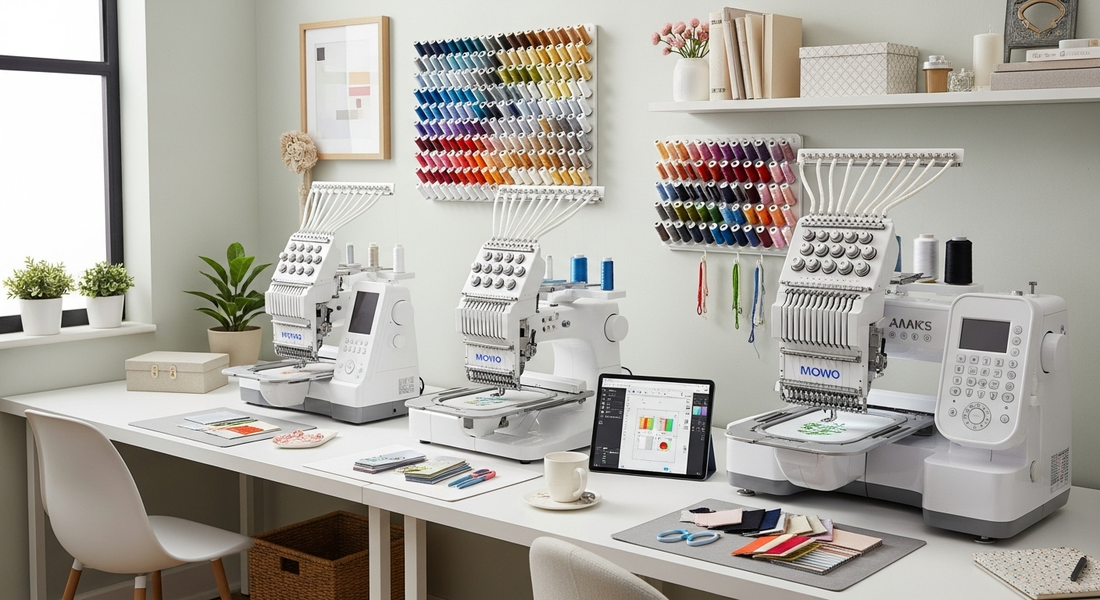
How I Chose My Embroidery Machine (And How You Can Too)
Share
When I first decided to buy an embroidery machine, I thought it would be as simple as picking one from a catalog. It wasn’t. Between the dozens of brands, features I’d never heard of, and price tags that ranged from “Okay, that’s reasonable” to “Is this machine made of gold?”, I quickly realized I needed to step back and think carefully. If you’re in the same boat, here’s what helped me figure it out—and what might help you, too.

What Do You Actually Want to Make?
The first question I asked myself was probably the most important: What am I going to use this for?
- If you're just playing around, stitching initials on towels or trying out cute patterns, a small machine with some built-in designs will do just fine.
- If you’ve started selling on Etsy or thinking about it, you’ll probably want a machine that can handle larger hoops or more complex patterns.
- And if embroidery is your business (or you’re planning to make it one), you’ll want something heavy-duty—fast, precise, and capable of working all day without breaking down.
I started as a hobbyist, but I knew I wanted the option to grow into something more.
Budget Talk: Be Honest With Yourself
I’ll be real—embroidery machines aren’t cheap. But they also don’t have to drain your savings.
Here’s how I looked at it:
- Entry-level machines (under $800) are great for learning and simple projects.
- Mid-range machines (up to $3000) give you room to experiment and grow.
- Pro-level machines (over $5000) are serious investments, but if you’re running a business, they can pay for themselves over time.
And remember: it’s not just the machine. You’ll need thread, stabilizers, software, hoops… all those little extras add up fast.

Features That Actually Matter
There’s a lot of marketing fluff out there, but these are the features I found truly useful:
- A machine with a decent hoop size so I wasn’t stuck stitching tiny designs forever.
- USB connection or Wi-Fi so I could upload my own patterns easily.
- An interface I could actually understand (some machines make you feel like you’re programming a spaceship).
- And if you plan to do this a lot: automatic threading and trimming. Total lifesaver.
I didn’t bother with things I’d never use, like built-in fonts in 12 languages or hundreds of stock designs I’d never touch.
What About Software?
Let me say this—don’t ignore the software side of things. Some machines come with it. Others don’t. Some require very specific formats. I had to learn this the hard way after hours spent editing a design I couldn’t even upload.
Do a quick check: Can your machine handle files like PES or DST? And is the software user-friendly? I ended up using Embrilliance at first, then switched to Hatch once I got more confident.
Ease of Use (And Real Help When You Need It)
Here’s something no one tells you: a machine is only as good as the help you get when something goes wrong.
I looked for brands with:
- • A solid library of YouTube tutorials.
- • An active Facebook or Reddit group.
- • Decent customer support that doesn’t leave you on hold for an hour.
You don’t want to be stuck mid-project with no clue why your thread keeps breaking.
Will It Still Work for You Next Year?
The last thing I thought about—maybe too late—was the future. Would this machine still work for me if I started doing more complex stuff? Could I add new accessories later? Did it feel like something I could grow into rather than outgrow in six months?
If you’re on the fence, I say this: go one step above what you think you need. It gives you room to explore, without feeling limited too soon.

Final Words
Buying an embroidery machine isn’t about finding the “best” one. It’s about finding the right one for you—your goals, your budget, your pace. I’ve made mistakes, spent more than I planned, and learned a lot along the way. But I don’t regret it. If you think through what matters to you, you’ll end up with a tool that inspires you—not one that collects dust.